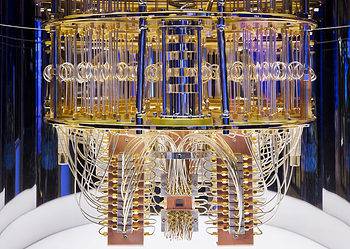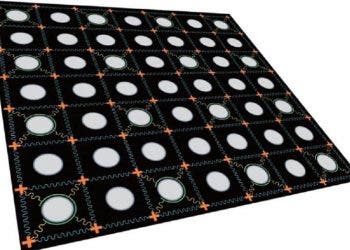
Physicists at the University of Oxford have taken a significant step toward solving one of the most daunting challenges in quantum computing: how to connect multiple quantum processors to work together seamlessly. Their breakthrough showcases a new method for distributing quantum computations across two separate modules linked by a photonic network. This achievement could be a crucial milestone in the quest to build large-scale, practical quantum computers.
Quantum computers promise to revolutionize fields like cryptography, drug discovery, and materials science by solving problems that are currently intractable for classical computers. But building a quantum computer with enough working qubits — the quantum equivalent of bits — to tackle these problems has proven extraordinarily difficult. One major hurdle is maintaining the delicate quantum states of qubits while scaling up the system.
But what if you could connect multiple smaller quantum computers? Think of it as a quantum version of a computer network, where each module is like a separate computer, and the photons act as the cables linking them together. This is the first demonstration of distributed quantum computing.
The Quantum Network That Could

A truly powerful quantum computer would need to process millions of qubits. The world’s most powerful quantum computer, IBM’s 22-foot-wide, 15-foot-high Quantum System Two, operates using a 1,121-qubit chip called Condor.
A qubit, or quantum bit, is the fundamental unit of information in a quantum computer. Unlike classical bits, which can be either 0 or 1, a qubit can exist in a superposition of both states at the same time.
This ability comes from the strange rules of quantum mechanics, where particles like electrons or photons don’t just have a single state but can occupy multiple possibilities until measured. A famous analogy is Schrödinger’s cat — both alive and dead until observed. This property allows quantum computers to process vast amounts of information in parallel, potentially solving complex problems exponentially faster than traditional computers.
But superposition is only part of what makes qubits powerful. They also rely on entanglement, a phenomenon Albert Einstein famously called “spooky action at a distance.” When two qubits become entangled, their states remain linked no matter how far apart they are.
Squeezing hundreds of thousands or millions of qubits into a single machine, however, presents immense challenges. Instead of cramming more qubits into one device, Oxford’s approach is different: network smaller quantum computers together. In theory, there is no upper limit to how many processors can be linked.
Each module in the new system contains a handful of trapped-ion qubits, held in place by electric fields. These qubits, tiny carriers of quantum information, are connected by optical fibers rather than traditional wiring. Instead of electrical signals, they communicate using photons, particles of light that can travel between the modules.
This arrangement is key because it allows for entanglement between different quantum modules. With entanglement, the Oxford team used a method called quantum teleportation to perform logical operations across the separate processors.
Until now, teleportation has mainly been used to transfer quantum states — essentially, information encoded in a single qubit. This new study takes it further, teleporting logical gate, the basic building blocks of quantum computation itself.
“Previous demonstrations of quantum teleportation have focused on transferring quantum states between physically separated systems,” said Dougal Main, the study’s lead author. “In our study, we use quantum teleportation to create interactions between these distant systems.”
This approach mirrors how traditional supercomputers work. By linking smaller units, they achieve capabilities far beyond what any single unit could manage. In some ways, the concept mirrors how traditional supercomputers work. Instead of a single powerful processor, supercomputers rely on thousands of smaller computing units working in parallel.
For quantum computing, this strategy sidesteps the engineering hurdles of packing more qubits into a single device while preserving the delicate quantum properties essential for accurate calculations.
“By interconnecting the modules using photonic links, the system gains valuable flexibility,” Main said. “Modules can be upgraded or swapped out without disrupting the entire architecture.”
A Glimpse of the Quantum Internet?
The ability to link quantum processors over a network hints at a future “quantum internet,” where distant quantum devices could form an ultra-secure network for communication, sensing, and computation.
To demonstrate the power of their system, the researchers ran Grover’s search algorithm, a quantum method that can search large, unstructured datasets far faster than classical computers. This experiment showed that network-distributed quantum information processing is feasible with current technology.
While the results are promising, the journey to large-scale quantum computing is far from over. The Oxford team’s work is a proof of concept, showing that distributed quantum computing is possible. But scaling up will require overcoming significant technical hurdles, from improving the stability of qubits to refining the photonic links that connect them.
“Scaling up quantum computers remains a formidable technical challenge,” said Professor David Lucas, principal investigator of the study. “It will likely require new physics insights as well as intensive engineering effort over the coming years.”
Yet, the blueprint is there. Instead of a single quantum leviathan, the future may belong to networks of smaller, interconnected machines — a web of quantum minds, working as one.
The findings appeared in the journal Nature.






